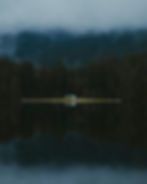Making the Most of Overcast Days: How to Level Up Your Photography When It’s Cloudy
- Jerry Lee
- 6 hours ago
- 6 min read

Overcast days often get a bad reputation among photographers. Many think cloudy skies mean dull light and uninspiring images, but in reality, these conditions can create some of the most compelling and atmospheric shots.
The soft, diffused light on overcast days minimizes harsh shadows and highlights, allowing textures, details, and colors to stand out in ways that bright sunlight rarely achieves. From landscapes to portraits, cloudy weather can add a subtle, moody quality to your photography that enhances the story you want to tell.
Instead of waiting for the sun to come out, learning to embrace overcast days can expand your creativity and skills. Shooting in these conditions challenges you to think differently about composition, exposure, and color.
In this guide, we’ll explore how to make the most of overcast days, from understanding the unique light they offer to adjusting your camera settings, composing striking shots, and even presenting your images in ways that showcase their full impact.
Why Overcast Days Can Improve Your Photography

Overcast days provide a unique quality of light that can dramatically improve your photography. The clouds act as a natural diffuser, softening sunlight and reducing harsh shadows that often make bright-day images feel flat or overly contrasted. This kind of even lighting is especially flattering for portrait photography, as it gently illuminates your subject without causing squinting or uneven highlights.
The muted tones of overcast days also allow textures and subtle details to shine. A moss-covered rock, weathered tree bark, or rippling water surface will display a depth and richness that might be lost in direct sunlight. By emphasizing texture and form, you can create images with a painterly or ethereal quality, transforming simple scenes into visually striking compositions.
Beyond technical benefits, overcast days also add a sense of mood and drama. The softer, cooler tones can evoke emotions such as calm, introspection, or mystery. Learning to use these subtle effects intentionally can give your photography an artistic edge and help you stand out creatively.
Adjusting Camera Settings for Overcast Days

To get the most out of overcast days, it’s important to adjust your camera settings to match the softer light. Start by considering your exposure. Lower light levels may require a slightly slower shutter speed, a wider aperture, or a higher ISO to ensure your photos are properly exposed. Balancing these settings is key to capturing sharp, detailed images without introducing unwanted noise.
Metering modes can also make a difference. Evaluative or matrix metering works well for evenly lit scenes, while spot metering can help when focusing on a particular subject that stands out against the subdued background. Keeping an eye on your histogram ensures that you’re not losing detail in shadows or highlights, especially when photographing complex textures on overcast days.
Another consideration is white balance. Cloudy skies tend to create cooler tones, which can make images appear slightly blue. Setting a custom white balance or using the “cloudy” preset can warm your images and bring out natural colors. Small adjustments in post-processing can also enhance these effects without losing the authenticity of the scene.
Composition Techniques on Overcast Days

Overcast days are ideal for experimenting with composition in ways that might be overlooked on sunny days. With softer light, you can focus on elements like lines, shapes, and textures that often get washed out by bright sunlight. Leading lines, arches, fences, or tree branches can help guide the viewer’s eye through the image while keeping attention on your subject.
Negative space becomes more powerful under diffused lighting. The soft, even light allows the background to complement your subject without competing for attention. This is particularly useful for minimalist photography or emphasizing a single, central element in your composition.
Reflections and wet surfaces also shine on overcast days. Rain puddles, lakes, or wet streets can create natural mirrors, adding depth and visual interest. By incorporating these elements thoughtfully, your photography gains complexity and a sense of mood that is hard to achieve under harsh sunlight.
Creative Uses of Weather Elements

Cloudy skies often bring other weather features that can elevate your photography. Fog, mist, and light rain all add layers of atmosphere and mystery. Shooting through light mist can soften distant elements, creating a sense of depth and perspective that draws the viewer in.
Motion is another creative tool. Long exposure techniques can turn moving clouds or water into smooth, flowing textures that contrast beautifully with sharp, still subjects. Even subtle wind movement can introduce a sense of life and energy into an image.
Silhouettes and backlighting are also possible on overcast days. The diffused light allows you to capture strong shapes without worrying about overly bright highlights. This can produce images that feel dramatic, contemplative, or even cinematic, depending on the subject and composition.
Post-Processing Tips for Overcast-Day Photography

Editing overcast-day photos requires a delicate touch. Because the light is naturally softer, you want to enhance details without losing the subtle mood that clouds provide. Adjusting shadows and highlights can help bring out textures, while slight contrast enhancements give images more visual impact.
Color correction is especially important on cloudy days. The cooler tones can be warmed subtly to create a more inviting feel, or you can lean into the cooler palette to emphasize mood. Increasing vibrance carefully can make muted colors pop without looking unnatural.
Noise reduction is also key when shooting in lower light. Using RAW files provides more flexibility for recovering details in shadows, and selective sharpening can keep the main subject crisp while maintaining soft edges in the background.
Showcasing Your Work with Canvas Prints

Once you’ve captured compelling images on overcast days, presenting them thoughtfully can amplify their impact. High-quality canvas prints are an ideal way to do this. Canvas adds a tactile, artistic feel that complements the soft textures and muted tones typical of cloudy-day photography.
Artbeat Studios offers premium canvas prints that naturally enhance images taken on overcast days. Our Giclée Canvas prints, for example, provide archival-quality reproduction with rich colors and sharp details, making subtle textures stand out beautifully. For a more luminous effect, our Metallic Canvas prints give images a gentle pearlescent shimmer that adds depth and life, especially for moody landscapes or street photography.
Customization is also key. With options for gallery wraps, various frame styles, and custom sizes up to 48x96 inches, you can present your overcast-day images exactly as envisioned. Moreover, a well-stretched canvas on real wood bars ensures longevity, giving your work the quality and presence it deserves in any space. That’s what you get with a canvas print from us!
Practical Exercises to Improve Your Cloudy-Day Photography

To make the most of overcast days, try targeted exercises. Portrait sessions using the soft light of cloud cover can help you master even skin tones and subtle shadows. Landscapes under gray skies are perfect for practicing composition, capturing reflections, and emphasizing textures in foliage, water, or rocks.
Urban photography benefits, too. Wet streets, puddles, and muted building tones provide an opportunity to experiment with reflections, long exposures, and minimalistic compositions. You can also test how subtle color pops emerge against neutral skies, giving your images a sophisticated feel.
Regularly reviewing and selecting your best shots for print helps you understand what works. Seeing your photography displayed on canvas can reveal new strengths, from tonal balance to composition, and encourage continued growth as a photographer.
Embracing Overcast Days as a Creative Advantage

Overcast days are not a limitation; they are an opportunity. By learning to adapt your camera settings, adjust compositions, and embrace subtle lighting, you can turn gloomy skies into powerful artistic tools. The softness of diffused light enhances textures, enriches colors, and provides an atmosphere that bright sunlight cannot replicate.
Developing a workflow that includes thoughtful post-processing and high-quality presentation, such as canvas prints, allows your cloudy-day photography to stand out. Even the simplest subjects gain impact when captured thoughtfully and displayed with care.
Ultimately, overcast days teach patience, observation, and creativity. By seeing the potential in cloudy conditions, photographers can transform ordinary moments into extraordinary images that are both visually compelling and emotionally resonant!
